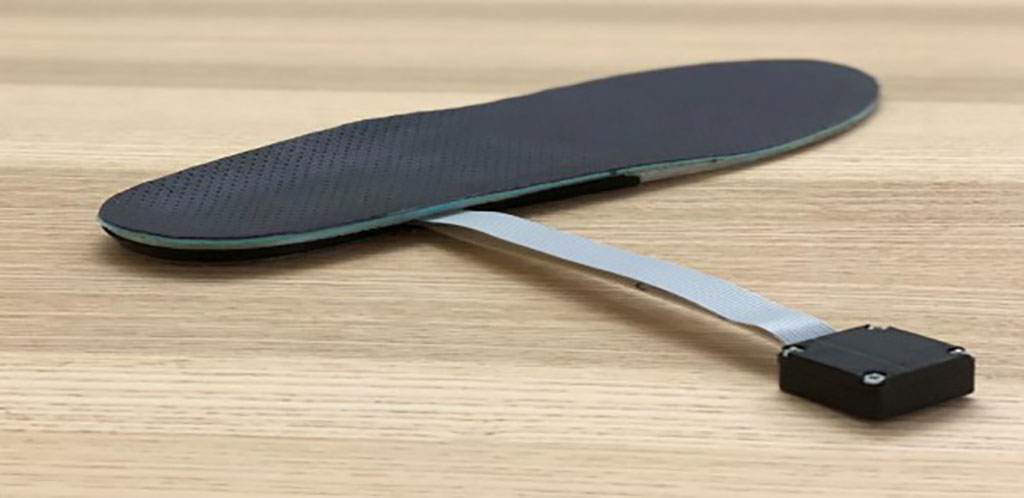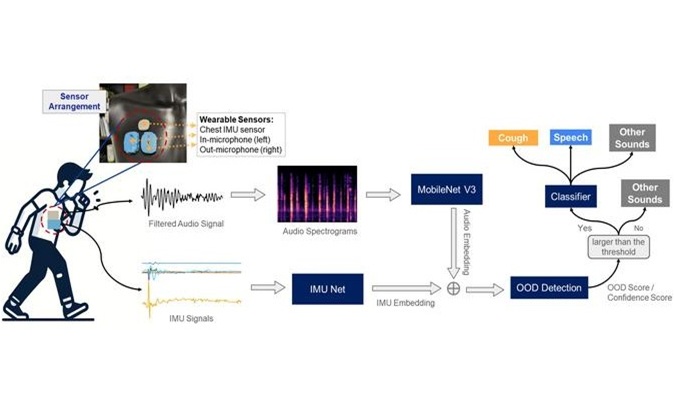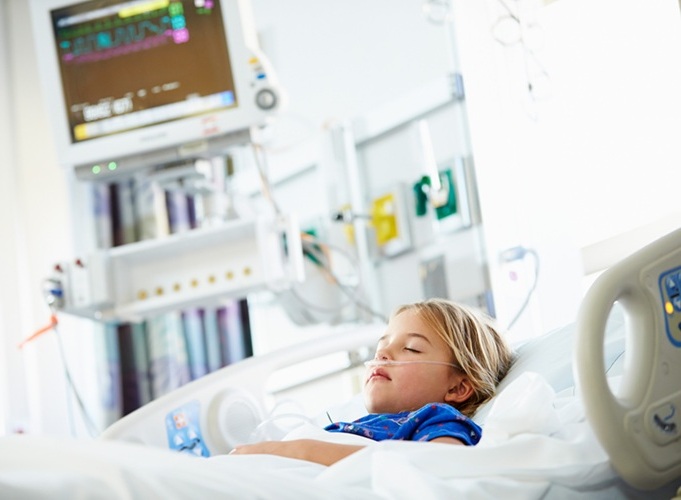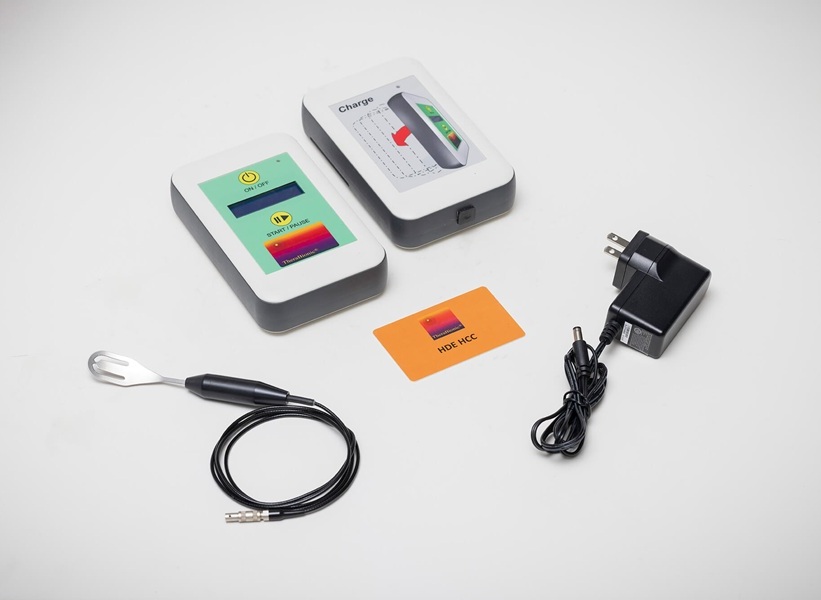Bionic Insole Helps Overcome Neuropathic Instability 
|
By HospiMedica International staff writers Posted on 15 Nov 2021 |

Image: The Augmented Vibrotexture bionic insole (Photo courtesy of Anna Hatton/ UQ)
A novel orthotic shoe insole help people with nerve damage maintain their balance, promoting safe, active, and independent living.
Designed at the University of Queensland (UQ; Brisbane, Australia), Walk with Path (Waltham Abbey, United Kingdom), and other partners, the new bionic technology, Augmented Vibrotexture, is based on a hybrid shoe insole that combines vibration and a geometric textured surface that provide proprioceptive stimuli to the soles of the feet. This provides feedback along the major sensory nerves that carry touch, vibration, and position sensation from the feet to the brain to help maintain balance.
The insoles are operated by a mobile app that tracks the user’s health and also allows remote health monitoring between patients and clinicians. A wide product range is currently under development, which will include insoles for those with neuropathy, balance issues due to other medical conditions, and a product that targets general health and well-being. The insole was recently awarded the major category prize in the 2021 Queensland Bionics Challenge, receiving AUD 50,000 in prize money and an eight-week mentoring program.
“One in six people will experience foot sensory loss due to numerous types of neuropathy, and up to 65% of people with this nerve damage will fall each year,” said Anna Hatton, PhD, of the UQ School of Health and Rehabilitation Sciences. “This is the first time a shoe insole has been developed with a hybrid design like this that provides two different types of sensory stimuli. We will be consulting with patients and key stakeholders in the design process and will use AI to measure brain activity in response to the foot sensory experience.”
According to the World Health Organization (WHO; Geneva, Switzerland), an elderly person is seen to every 11 seconds in an emergency room after a fall, and up to 30% of people over 65 and 50% of those over 80 fall at least once a year. The result of a majority of these falls is a hip fracture, with about 60,000 elderly people dying every year as a result of such falls.
Related Links:
University of Queensland
Walk with Path
World Health Organization
Designed at the University of Queensland (UQ; Brisbane, Australia), Walk with Path (Waltham Abbey, United Kingdom), and other partners, the new bionic technology, Augmented Vibrotexture, is based on a hybrid shoe insole that combines vibration and a geometric textured surface that provide proprioceptive stimuli to the soles of the feet. This provides feedback along the major sensory nerves that carry touch, vibration, and position sensation from the feet to the brain to help maintain balance.
The insoles are operated by a mobile app that tracks the user’s health and also allows remote health monitoring between patients and clinicians. A wide product range is currently under development, which will include insoles for those with neuropathy, balance issues due to other medical conditions, and a product that targets general health and well-being. The insole was recently awarded the major category prize in the 2021 Queensland Bionics Challenge, receiving AUD 50,000 in prize money and an eight-week mentoring program.
“One in six people will experience foot sensory loss due to numerous types of neuropathy, and up to 65% of people with this nerve damage will fall each year,” said Anna Hatton, PhD, of the UQ School of Health and Rehabilitation Sciences. “This is the first time a shoe insole has been developed with a hybrid design like this that provides two different types of sensory stimuli. We will be consulting with patients and key stakeholders in the design process and will use AI to measure brain activity in response to the foot sensory experience.”
According to the World Health Organization (WHO; Geneva, Switzerland), an elderly person is seen to every 11 seconds in an emergency room after a fall, and up to 30% of people over 65 and 50% of those over 80 fall at least once a year. The result of a majority of these falls is a hip fracture, with about 60,000 elderly people dying every year as a result of such falls.
Related Links:
University of Queensland
Walk with Path
World Health Organization
Latest Patient Care News
- Revolutionary Automatic IV-Line Flushing Device to Enhance Infusion Care
- VR Training Tool Combats Contamination of Portable Medical Equipment
- Portable Biosensor Platform to Reduce Hospital-Acquired Infections
- First-Of-Its-Kind Portable Germicidal Light Technology Disinfects High-Touch Clinical Surfaces in Seconds
- Surgical Capacity Optimization Solution Helps Hospitals Boost OR Utilization

- Game-Changing Innovation in Surgical Instrument Sterilization Significantly Improves OR Throughput
- Next Gen ICU Bed to Help Address Complex Critical Care Needs
- Groundbreaking AI-Powered UV-C Disinfection Technology Redefines Infection Control Landscape
- Clean Hospitals Can Reduce Antibiotic Resistance, Save Lives
- Smart Hospital Beds Improve Accuracy of Medical Diagnosis
- New Fast Endoscope Drying System Improves Productivity and Traceability
- World’s First Automated Endoscope Cleaner Fights Antimicrobial Resistance
- Portable High-Capacity Digital Stretcher Scales Provide Precision Weighing for Patients in ER
- Portable Clinical Scale with Remote Indicator Allows for Flexible Patient Weighing Use
- Innovative and Highly Customizable Medical Carts Offer Unlimited Configuration Possibilities
- Biomolecular Wound Healing Film Adheres to Sensitive Tissue and Releases Active Ingredients
Channels
Critical Care
view channel
Origami Robots to Deliver Medicine Less Invasively and More Effectively
Delivering medicine to ulcers or other internal sites often requires invasive procedures that can disrupt surrounding tissues and lengthen recovery times. Traditional magnetic actuators used in soft robotics... Read more
Improved Cough-Detection Technology Aids Health Monitoring
Coughing serves as an important biomarker for tracking a variety of conditions and can help monitor the progress of respiratory diseases or predict when someone’s asthma is being exacerbated.... Read moreSurgical Techniques
view channel
Novel Glue Prevents Complications After Breast Cancer Surgery
Seroma and prolonged lymphorrhea are among the most common complications following axillary lymphadenectomy in breast cancer patients. These postoperative issues can delay recovery and postpone the start... Read more
Breakthrough Brain Implant Enables Safer and More Precise Drug Delivery
Delivering medication directly to specific regions of the brain has long been a major challenge in treating neurological disorders. Current implants and infusion systems typically reach only one or two... Read moreHealth IT
view channel
Printable Molecule-Selective Nanoparticles Enable Mass Production of Wearable Biosensors
The future of medicine is likely to focus on the personalization of healthcare—understanding exactly what an individual requires and delivering the appropriate combination of nutrients, metabolites, and... Read moreBusiness
view channel
Philips and Masimo Partner to Advance Patient Monitoring Measurement Technologies
Royal Philips (Amsterdam, Netherlands) and Masimo (Irvine, California, USA) have renewed their multi-year strategic collaboration, combining Philips’ expertise in patient monitoring with Masimo’s noninvasive... Read more
B. Braun Acquires Digital Microsurgery Company True Digital Surgery
The high-end microsurgery market in neurosurgery, spine, and ENT is undergoing a significant transformation. Traditional analog microscopes are giving way to digital exoscopes, which provide improved visualization,... Read more
CMEF 2025 to Promote Holistic and High-Quality Development of Medical and Health Industry
The 92nd China International Medical Equipment Fair (CMEF 2025) Autumn Exhibition is scheduled to be held from September 26 to 29 at the China Import and Export Fair Complex (Canton Fair Complex) in Guangzhou.... Read more
















